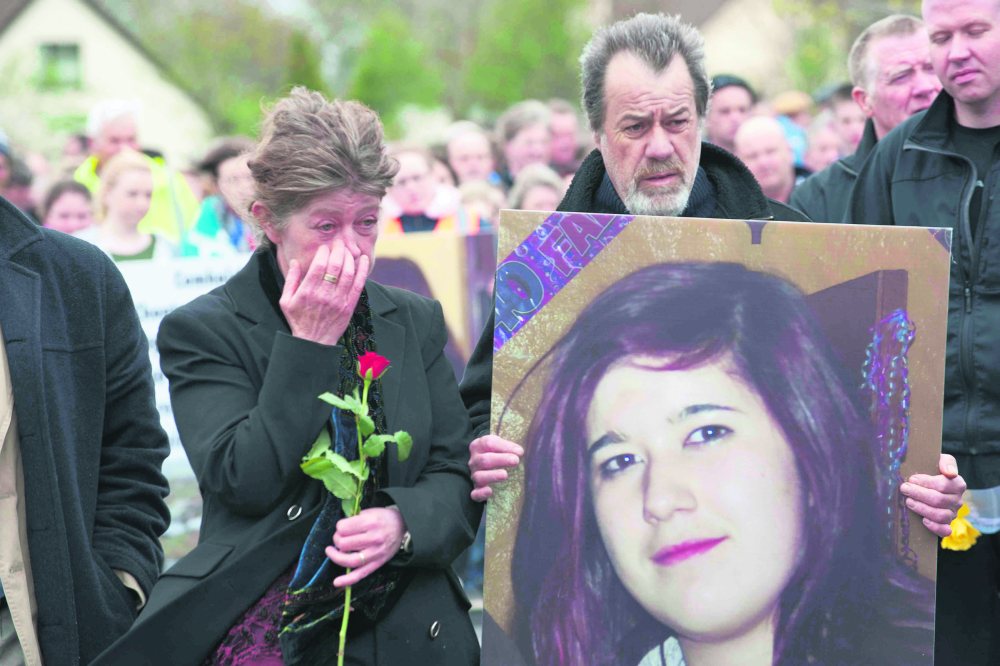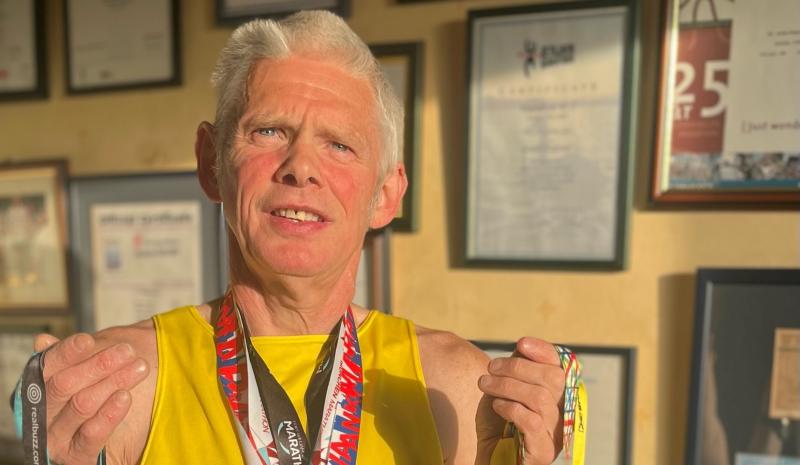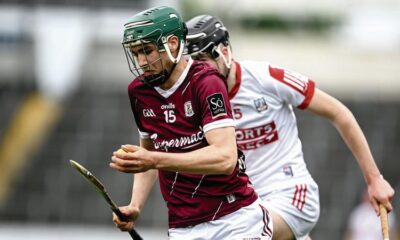News
Inquest adjourned for mobile phone records

The inquiry into the death of a 15 year old pedestrian, who received fatal head injuries in an accident two years ago, could not be concluded as her family asked for Garda evidence that the driver was not using his mobile phone at the time.
Leah Feeney, of Clynagh, Carraroe, died almost instantly after being struck by a car near Rossaveal Pier on May 1 2013. She had been walking along the road with a friend at twilight.
Coroner for West Galway, Dr Ciaran MacLoughlin, opened the Inquest by acknowledging that this would be a difficult process for the family, but pointed out to all parties that it was not an adversarial process, but rather one of inquiry.
“There is no prosecution; there is no defence – we just try to establish the facts as to what happened,” he said.
Three drivers recalled seeing Leah and her school friend, Alan McDonagh, minutes before the crash, which occurred at about 9.40pm near An Chéibh pub, on the R372, which links the harbour and the main Galway/Carraroe road (R336).
They all said it was getting dark at the time, and had to use their headlights, but two of them managed to recognise Alan, and one remembered that Leah was wearing white runners.
Mr McDonagh said that he and Leah were chatting when she was suddenly hit from behind by a car.
The driver, Colm Seoige (22), was going to visit his girlfriend in Carraroe, and told the inquiry that he had not seen the pedestrians as a car coming towards him had blinded him with its headlights.
He said that he had slowed down, as his visibility was impaired, but that he had not been blinded altogether until the car was right in front of him. By this stage, however, Leah was at his bonnet. He attempted to swerve right to avoid her, but failed, and she was thrown forward along the ditch.
Two ambulances attended the scene, but she was in cardiac arrest when she arrived in UHG, and was pronounced dead at 11.23pm.
Consultant pathologist, Dr Grace Callaghy, said that Ms Feeney has sustained serious head injuries, and had died from intracranial haemorrhage.
She agreed with the Coroner that injuries of this severity would have resulted in instantaneous death.
Accident investigator, Sgt Seamus O’Regan, said that the road was bound by a ditch and grass verge on the left, where Leah had been walking, while the other side was made up of loose chippings. There were no footpaths, nor were there street lamps, and the speed limit was 80 km/h.
Leah’s mobile phone was found 10.1m from her body, and he believed that this likely marked the point of impact; the Toyota Corolla driven by Mr Seoige was found 30.7m away from the phone.
Using data collected from the scene, he estimated that the car was being driven at an average speed of 37km/h when Leah was struck.
Barrister for the Feeney family, Deirdre Browne, questioned the absence of one Garda witness – whose statement she had received – who had tested Mr Seoige’s mobile phone, and downloaded the records.
The driver had told the Inquest that he had not been using it at the time of the crash, and that Gardaí had seized it at the scene, and had held on to it since.
Ms Browne said that her clients had continuously sought these records, but that Gardaí would only release them on receipt of a court order.
“They would like to see the activity on the phone at the time of the incident, and we understood that these would be available today,” she said.
“This is to see that they stack up with the account (given by Mr Seoige). We would ask you not to conclude the Inquest until the Garda witness is here.”
However, Dr MacLoughlin said that Ms Browne was trespassing on Section 30 of the Coroner’s Act 1962, which deals with questions of civil or criminal liability being entered into.
“Phone records are a matter of privacy… you can’t use the Coroner’s Court to do that,” he replied.
“There is a very high level of protection and right to privacy of telephone records.”
However, he did say that the Garda could confirm that he had looked at the telephone records, and divulge that there was or was not any activity on the phone at the time of the accident.
Ms Browne said that this would be acceptable to her clients.
The Inquest was then adjourned until October 16.
Connacht Tribune
West has lower cancer survival rates than rest

Significant state investment is required to address ‘shocking’ inequalities that leave cancer patients in the West at greater risk of succumbing to the disease.
A meeting of Regional Health Forum West heard that survival rates for breast, lung and colorectal cancers than the national average, and with the most deprived quintile of the population, the West’s residents faced poorer outcomes from a cancer diagnosis.
For breast cancer patients, the five-year survival rate was 80% in the West versus 85% nationally; for lung cancer patients it was 16.7% in the west against a 19.5% national survival rate; and in the West’s colorectal cancer patients, there was a 62.6% survival rate where the national average was 63.1%.
These startling statistics were provided in answer to a question from Ballinasloe-based Cllr Evelyn Parsons (Ind) who said it was yet another reminder that cancer treatment infrastructure in the West was in dire need of improvement.
“The situation is pretty stark. In the Western Regional Health Forum area, we have the highest incidence of deprivation and the highest health inequalities because of that – we have the highest incidences of cancer nationally because of that,” said Cllr Parsons, who is also a general practitioner.
In details provided by CEO of Saolta Health Care Group, which operates Galway’s hospitals, it was stated that a number of factors were impacting on patient outcomes.
Get the full story in this week’s Connacht Tribune, on sale in shops now, or you can download the digital edition from www.connachttribune.ie. You can also download our Connacht Tribune App from Apple’s App Store or get the Android Version from Google Play.
Connacht Tribune
Marathon Man plans to call a halt – but not before he hits 160 races

On the eve of completing his 150th marathon, an odyssey that has taken him across 53 countries, Loughrea’s Marathon Man has announced that he is planning to hang up his running shoes.
But not before Jarlath Fitzgerald completes another ten races, making it 160 marathons on the occasion of his 60th birthday.
“I want to draw the line in 2026. I turn 57 in October and when I reach 60 it’s the finishing line. The longer races are taking it out of me. I did 20 miles there two weeks ago and didn’t feel good. It’s getting harder,” he reveals.
“I’ve arthritis in both hips and there’s wear and tear in the knees.”
We speak as he is about to head out for a run before his shift in Supervalu Loughrea. Despite his physical complaints, he still clocks up 30 miles every second week and generally runs four days a week.
Jarlath receives injections to his left hip to keep the pain at bay while running on the road.
To give his joints a break, during the winter he runs cross country and often does a five-mile trek around Kylebrack Wood.
He is planning on running his 150th marathon in Cork on June 4, where a group of 20 made up of work colleagues, friends and running mates from Loughrea Athletics Club will join him.
Some are doing the 10k, others are doing the half marathon, but all will be there on the finishing line to cheer him on in the phenomenal achievement.
Get the full story in this week’s Connacht Tribune, on sale in shops now, or you can download the digital edition from www.connachttribune.ie. You can also download our Connacht Tribune App from Apple’s App Store or get the Android Version from Google Play.
CITY TRIBUNE
Galway ‘masterplan’ needed to tackle housing and transport crises

From the Galway City Tribune – An impassioned plea for a ‘masterplan’ that would guide Galway City into the future has been made in the Dáil. Galway West TD Catherine Connolly stated this week that there needed to be an all-inclusive approach with “vision and leadership” in order to build a sustainable city.
Deputy Connolly spoke at length at the crisis surrounding traffic and housing in Galway city and said that not all of the blame could be laid at the door of the local authority.
She said that her preference would be the provision of light rail as the main form of public transport, but that this would have to be driven by the government.
“I sat on the local council for 17 years and despaired at all of the solutions going down one road, metaphorically and literally. In 2005 we put Park & Ride into the development plan, but that has not been rolled out. A 2016 transport strategy was outdated at the time and still has not been updated.
“Due to the housing crisis in the city, a task force was set up in 2019. Not a single report or analysis has been published on the cause of the crisis,” added Deputy Connolly.
She then referred to a report from the Land Development Agency (LDA) that identified lands suitable for the provision of housing. But she said that two-thirds of these had significant problems and a large portion was in Merlin Park University Hospital which, she said, would never have housing built on it.
In response, Minister Simon Harris spoke of the continuing job investment in the city and also in higher education, which is his portfolio.
But turning his attention to traffic congestion, he accepted that there were “real issues” when it came to transport, mobility and accessibility around Galway.
“We share the view that we need a Park & Ride facility and I understand there are also Bus Connects plans.
“I also suggest that the City Council reflect on her comments. I am proud to be in a Government that is providing unparalleled levels of investment to local authorities and unparalleled opportunities for local authorities to draw down,” he said.
Then Minister Harris referred to the controversial Galway City Outer Ring Road which he said was “struck down by An Bord Pleanála”, despite a lot of energy having been put into that project.
However, Deputy Connolly picked up on this and pointed out that An Bord Pleanála did not say ‘No’ to the ring road.
“The High Court said ‘No’ to the ring road because An Bord Pleanála acknowledged it failed utterly to consider climate change and our climate change obligations.
“That tells us something about An Bord Pleanála and the management that submitted such a plan.”
In the end, Minister Harris agreed that there needed to be a masterplan for Galway City.
“I suggest it is for the local authority to come up with a vision and then work with the Government to try to fund and implement that.”












